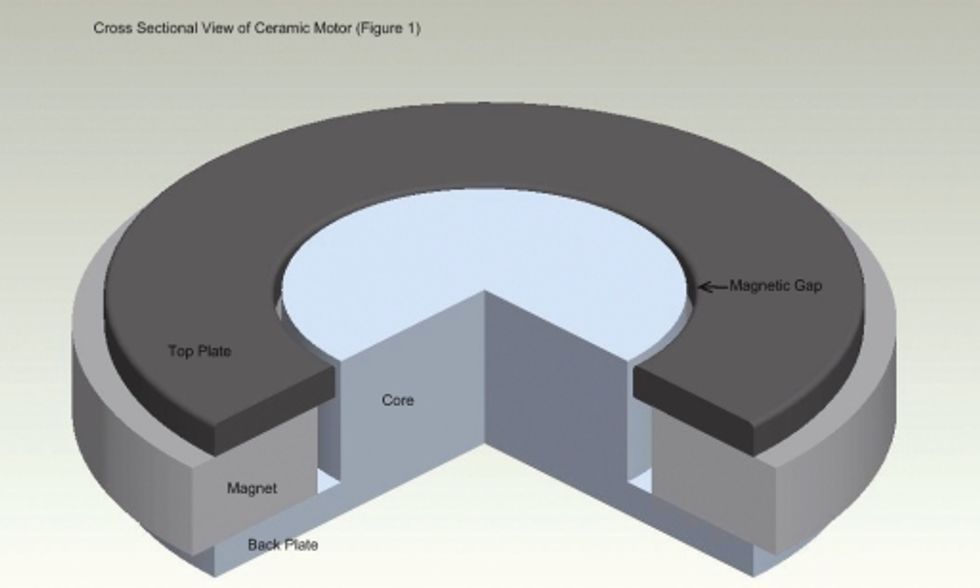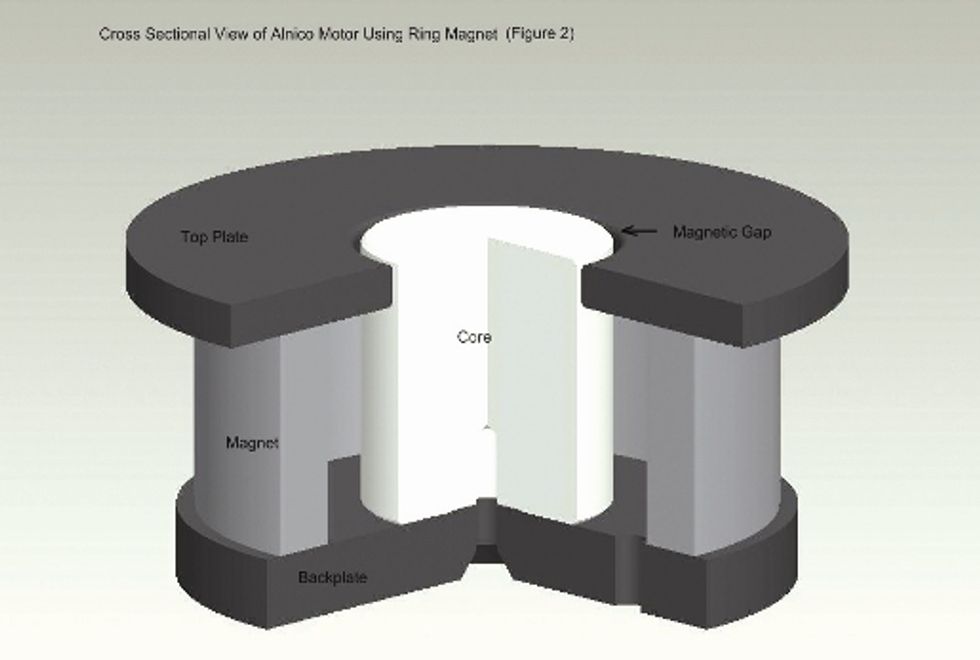Big Tony lets us in on all the little secrets about speaker magnets.
Was the main reason you purchased a certain guitar speaker because it had an Alnico magnet? Are you unwilling to purchase a ceramic speaker for a vintage application? Are you afraid to purchase a neodymium speaker because of negative generalizations you’ve heard about them, even though your back won’t allow you to pack your current gear to your gig? If you can answer yes to any of these questions, or if you are curious about the topic of magnets in general, then you will surely be “attracted” to this article.
Three magnet materials are commonly used in guitar speaker manufacturing: ceramic (or ferrite), Alnico and neodymium. Each material has different magnetic properties and cost. Ceramic is the cheapest and most commonly used material. Alnico is a rare composite of aluminum, nickel and cobalt, and is the most expensive. Alnico is commonly thought to produce a “vintage” tone and has a reputation for sounding compressed. Neodymium seems to be the wave of the future. It offers reduced weight and overall
costs are coming down. It produces the most magnetic flux per ounce. A neodymium magnet exhibiting the same strength as a given ceramic magnet will have only 10-15 percent of the ceramic magnet’s weight. This makes neo ideal for use in multiple speaker cabinets to maintain performance while reducing handling and shipping weight. I will demonstrate how each magnetic motor differs, briefly describe each motor part, its contribution to the tone, and maybe even challenge how you think about choosing your speakers.
 |
Figure 1 depicts a ceramic magnet motor. As previously stated, this is the most common type you will see on today’s guitar speakers. The magnet is a ring positioned between a top plate and back plate. You might see older speakers that used square ceramic magnets; this was common in the seventies and eighties. The assemblies were bolted together, but adhesives are used today. Ceramic magnets will vary in diameter and thickness even when used on the same plates; the plates will also vary in diameter and thickness. Using various magnet and plate thicknesses affects the efficiency of the speaker, as well as impacts the Qts parameter, which is an indicator of low-end
response. Varying the diameter of the magnet has a much greater impact than increasing the thickness, due to an increase in surface area. An interesting fact is that a smaller magnetic motor will have more bass response than a larger magnetic motor (assuming everything else is the same) because it raises the Qts.
The top plate has an inner diameter that will vary relative to the voice coil diameter. It can also vary slightly within the same voice coil diameter to accommodate multiple wire sizes. In some cases, speaker designers may vary the inner diameter to manipulate the performance.
The core (or pole-piece) is attached to the back plate. The core and back plate can be tooled as one piece or tooled separately, in which case the core is welded or staked to the plate. It will vary in diameter relative to the voice coil diameter and height. Guitar speakers typically feature a solid core, but in some cases it may be vented. The core extends through the centers of the magnet and top plate to become even with the top plate. Many pro audio and bass speakers use extended poles for longer excursions.
The magnetic gap is formed between the core and the top plate’s inner diameter. This is where the voice coil is positioned. The magnet is positioned around the voice coil on the ceramic magnet motor. Manipulating the width and height of the magnetic gap affects the sensitivity and the breakup characteristics of the speaker. A tighter gap lends
more focused energy, which correlates to greater efficiency. Some manufacturers use tighter gaps, offering significantly higher efficiency; however, failures from voice coil rubs are much more likely in this case. A balance of gap width and efficiency is a must for all manufacturers.
 |
Figure 2 represents an Alnico motor. The same design characteristics previously explained for the ceramic magnet ring apply here. Alnico is produced in several different grades and strengths. The most expensive grades provide more magnetic flux per ounce than ceramic magnets.
Well, it looks like we’re about out of space this month. We will continue this discussion in next month’s article and will show you another Alnico motor and a neodymium motor.
Anthony “Big Tony” Lucas
is a guitarist and Senior Lab Technician at Eminence Speaker LLC, where he specializes in guitar-speaker design and customer support. Big Tony has been with Eminence for over 10 years and is responsible for many well-known guitar speaker designs.
